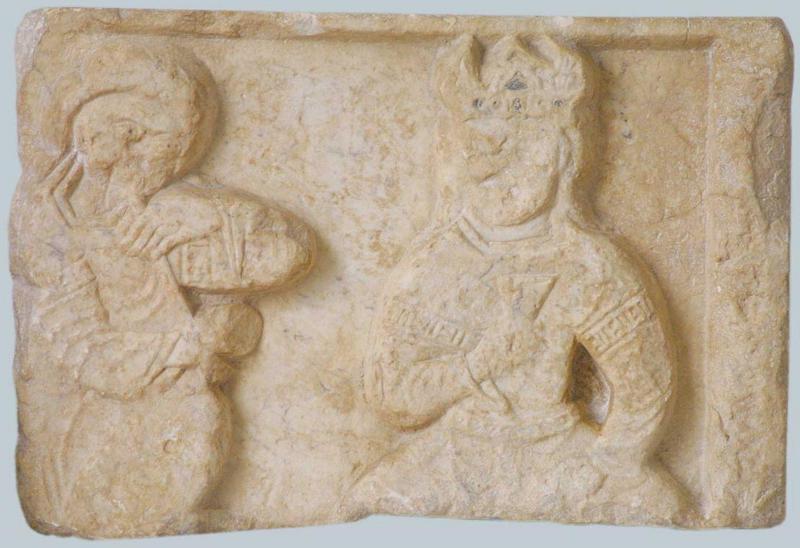Bas-relief showing a ruler and a flutist
Carved and inlaid marble. Ifriqiya, Mahdiyya, 10th Century.

A larger image of the Bas-relief showing a ruler and a flutist. Carved and inlaid marble. Ifriqiya, Mahdiyya, Bardo Palace Museum, Tunis
In the right-hand section of the bas-relief is a seated figure wearing a richly embroidered tunic.
The heavy crown on his head defines him as a sovereign or military leader.
With his right hand he lifts a cup to his lips.
To his right a musician plays the flute.
The man's head is covered with a veil and the sleeves of his tunic are decorated with bands containing geometric motifs.
His eyes are almond-shaped and very prominent.
This bas-relief is one of those rare gems of Ifriqiyan art representing people and their daily life.
The artist is totally unconcerned with anatomical detail. The musician's face does not betray age, type or expression.
This work probably has its roots in a very ancient North African tradition.
Some art historians hold that the style recalls various funeral stelae which the Romano-Africans dedicated particularly to Saturn and to Caelestis.
Common features are the frontal poses, their rigidity, the indifference to spatial considerations and the prominence of the eyes.
The similarities of this piece to several carvings in wood and ivory from the Spanish Umayyad,
the Egyptian Fatimid and the Eastern Abbasid eras are astonishing, especially the face of the flute player, the costumes and the veils.
The crown has been described as Norman by some experts.
Similar crowns have been found on ivory panels from Fatimid Egypt and also on Mesopotamian pottery from the same era.
The bas-relief was discovered at Mahdiyya, capital of the Fatimids and then of the Zirids during the 4th-5th / 10th-11th centuries.
Carved marble. Fatimid period 10th-12th century. Bardo Palace Museum, Tunis. Museum with no Frontiers
End: Fatimid Manuscript with 'Jazrafil who rides an Elephant', c. 1200 AD, British Museum, London Next: Fatimid-Zirid Plate with a Battle Scene, Museum of Islamic Art, Raqqada, Tunisia
Fatimid Illustrations of Musicians, Dancers, Revellers & Labourers

